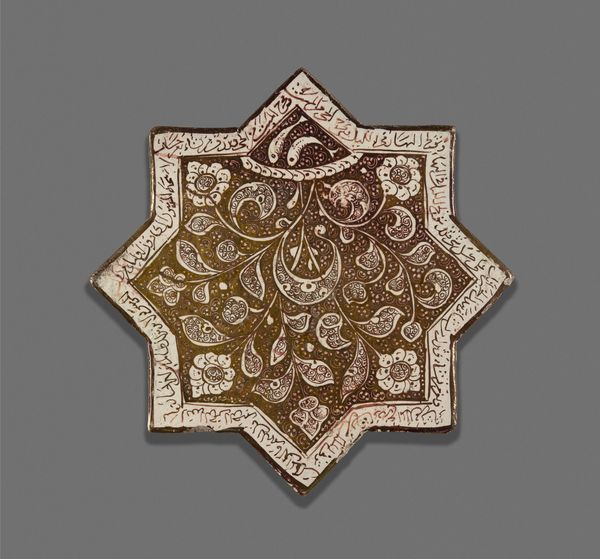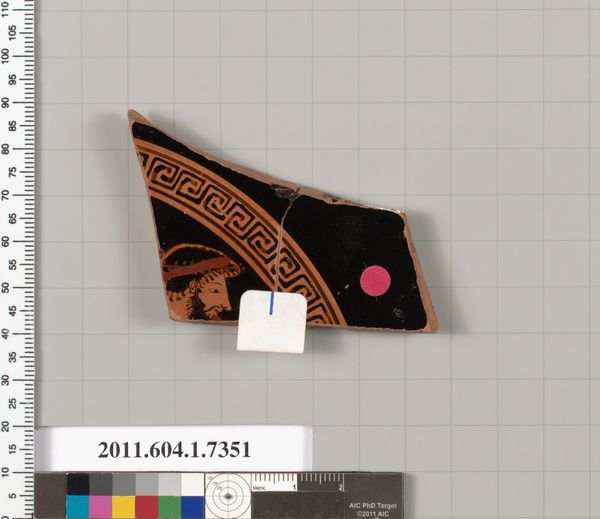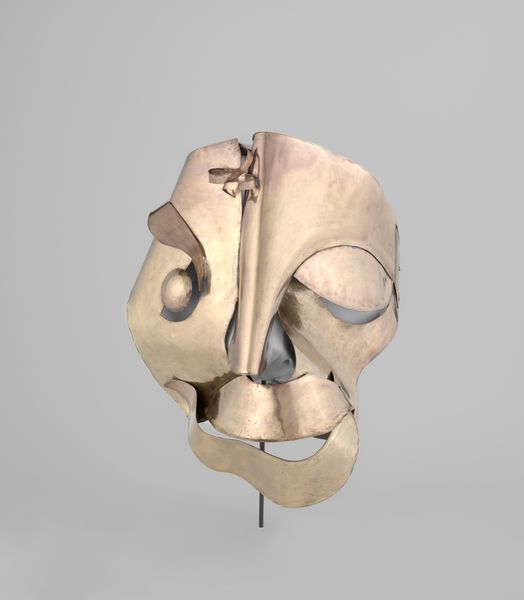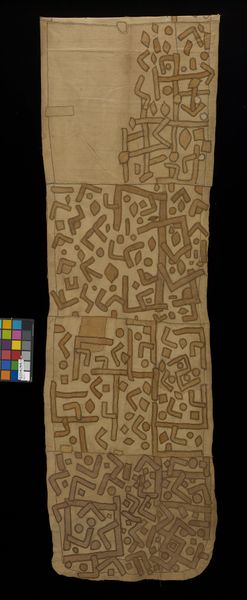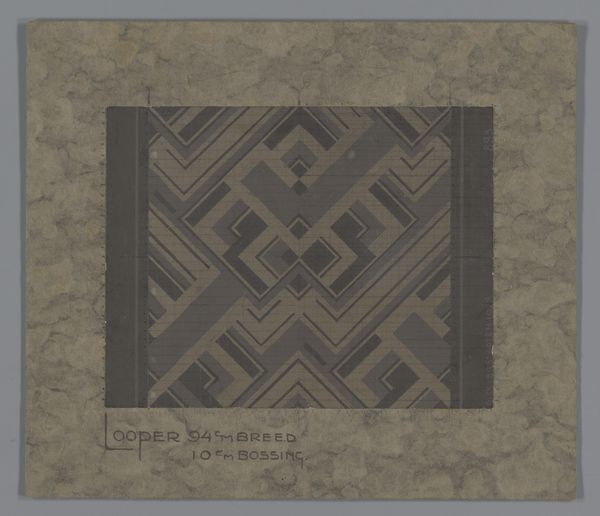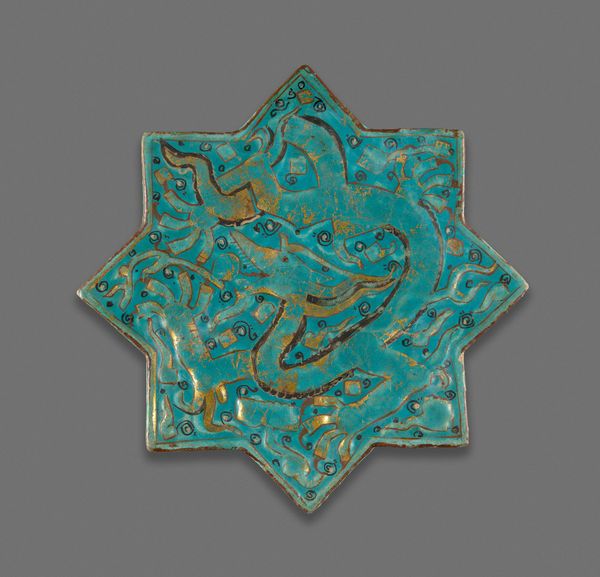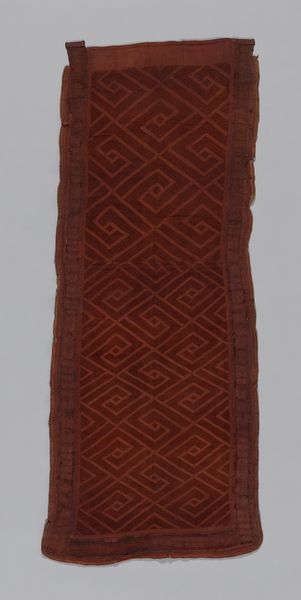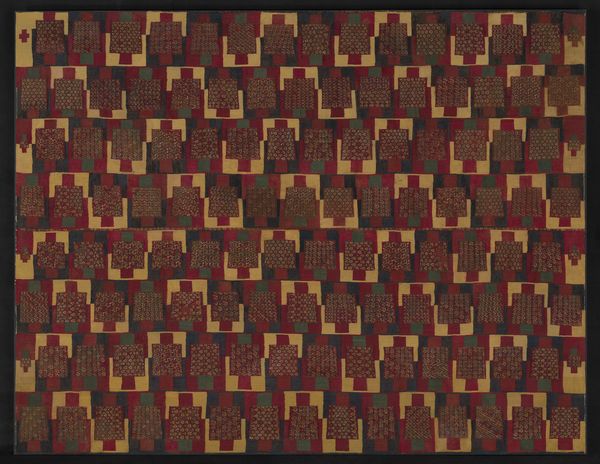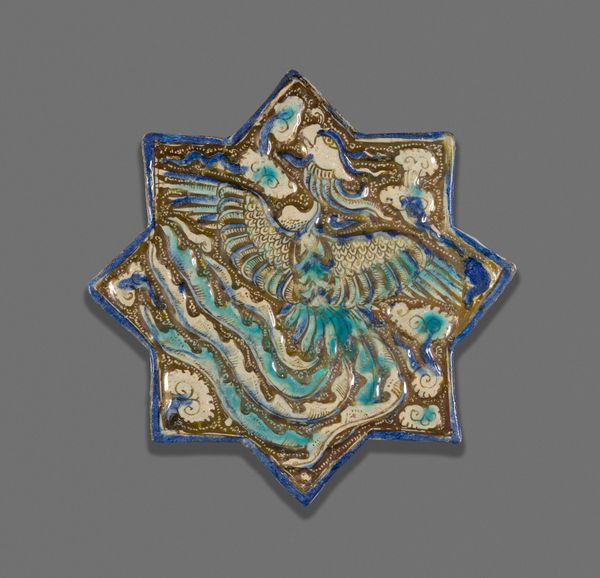
drawing, terracotta
#
portrait
#
drawing
#
head
#
greek-and-roman-art
#
vase
#
figuration
#
roman-art
#
minimal pattern
#
ancient-mediterranean
#
arch
#
terracotta
Dimensions: H. 2 1/2 in. (6.3 cm)
Copyright: Public Domain
Curator: This is a fragment of a terracotta amphora, or jar, dating back to 550 BC. It's currently housed in the Metropolitan Museum of Art. Editor: The first thing that strikes me is its incompleteness, of course. But even as a fragment, the image of that austere face really pops against the simple geometric pattern. Curator: Right, and the choice of terracotta is important. Terracotta was so widely available. Pottery making in ancient Greece wasn’t seen as high art in the way that, say, sculpture was, but it provided a crucial platform for visual narratives. Editor: And the dissemination of those narratives! Think about it—how accessible this imagery would have been to everyday people, adorning vessels used in daily life. What stories might this particular amphora have told? The figure appears almost regal; what socio-political messages were being promoted, or consumed? Curator: I’d also think about the technical aspects of its creation. We're seeing the sophisticated control of the artist over the material, the precise way they could get that contrasting black pigment to adhere to the terracotta slip. It involved multiple firings in the kiln with specific temperatures. Editor: Exactly. It suggests a complex workshop practice. The level of training craftspeople had and their social standing within their community— all those factors affect the quality and reception of work. How much agency did these artisans even possess in what they produced? Curator: Looking closely, you can trace how that image would likely spread through commerce; we think that pots like this, depending on what was held in them, got dispersed broadly. So how a head with minimal detail might represent ideal characteristics for the society should make us think of ancient image production and circulation Editor: It really forces you to think beyond aesthetics, doesn’t it? It connects us directly to the lived experiences and material culture of ancient Greece. And a broken jar brings even bigger questions about access and interpretation to its audience. Curator: It reminds us of art's entanglement with manufacturing and commercial networks. That changes how we contextualize this "fragment" within economic histories of the period. Editor: A humbling reminder that the stories these objects held are only partially ours to know.
Comments
No comments
Be the first to comment and join the conversation on the ultimate creative platform.

